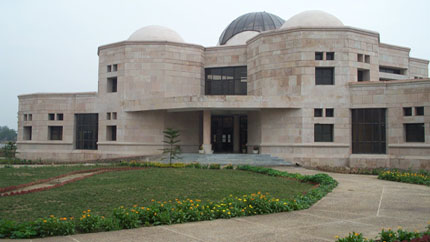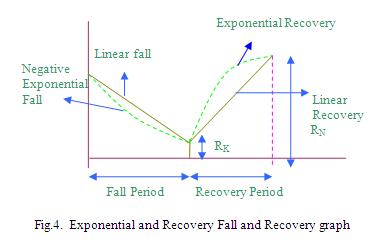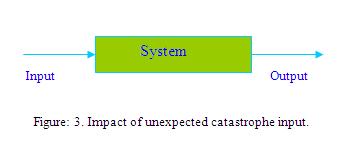Category
IIITA News
About Us

Insight
Mathematical Estimation of Leadership
Sachin Kumar Srivastava1
Sahara Arts & Management Academy, Lucknow,India
Contact Number: 00919415039081
Contact E mail: contact2sachinsrivastava@gmail.com,sachi_luv@rediffmail.com
Dr. H. M. Srivastava2
Sagar institute of technology & Management, Barabanki ,India
Email: drhm_srivastava@rediffmail.com
Dr. Manoj Dixit3
Department of Public Administration
University of Lucknow,India
E mail: manojdixit23@gmail.com
Shikha Maheshwari4
Sagar institute of technology & Management, Barabanki,India
Keywords: Leadership, Leader's role, working ability, leader's impact, Production.
Abstract
Leadership is a combination of the qualities of leader, the followers and the situation. Effective leader is one who is able to handle every kind of situation with relative ease and is able to keep his/her team motivated. The ideal leader is one who is able to motivate every individual of every team to work with their best of ability. If we are able to calculate the ability of the leader and motivation we will be able to analyze the impact of leadership under different situations. The article attempts to provide a model for calculating the impact of leadership and the ability of a leader.
1.Introduction:
In an organization, output is dependent upon several interdisciplinary forces. There forces should be synergized in a manner that the productivity is optimized. The organization requires a leader, who should motivate the teams and their members. The smartness of the leader should be such that he/she motivates every individual of every team to work with their best of ability. The leadership person value of such a man is estimated highest. There may be another situation that every team works independently and casually. The productivity of such working culture is poor and the value of leadership is lowest. For the purpose of study this value can be assumed to be ‘zero’ - representing a poor or even working without leader in the organization. It has been observed that sometimes the presence of a leader itself negatively affects working because of the directing, unskillful or in integrative behavior of the leader. This affects adversely in the production.
A mathematical model is proposed to develop for the leadership in an organization. Where there are M teams each headed by an in charge of the team. It is further assumed that there are P workers in each team. It is assumed that the input raw material is of quality and is fully utilized. For such models Kaufman carried out a study in 1987.
NK model developed by Kauffman and Levin (1987) for studying genome evolution, Solow et at.(2002) applied the model to the process of replacing members of a team. In the paper of Solow and Leenaworng they studied the role of a leader in achieving cooperation among the team members. Leader shows the impact on the team’s performance.
Organization measures the various roles of a leader in different situations. It is obvious that the most important role is that of motivation. Organization tries to compare between the performance of team, with and without the leadership. a model includes controllable parameters, whose values reflect the amount of interdependence among team members as well as the skill of the leader and variability.
The mathematical model was developed on the basis of following variables.
Improvement of output with the skill of leader.
Leaders with motivational skill improve interdependence amongst workers, and this improves performance.
For better output, leader should have skill and availability.
Important ability of leader is to prepare PERT for all the teams. For the completion of the chart and then sequence them for execution, this role thus may come important as working scenario imagined and prepare in advance. This can be met only by an intelligent and experienced leader.
2.Leader's role and work:
As per NK model, he/she should have appreciation for the work of each team, their ability to work and he/she should know the time of production in each quanta time. A skill-full leader prepares chart for PERT while allotting the job to teams. He has to meditative people to its highest level. So that the assignment will be completed in the prescribe time. A very important factor is generation of the motivation by rumors among the workers. Hence one of the very important roles of leader is not to allow any rumor to spread in.
Figure-1 Relationship between Leader and teams
Hence, he/she is an important member of the organization and has to participate in
Human response management.
Motivating the teams
Networking the team work
Activate traditional activities
3.Working ability of leader:
Different kinds of working abilities are required for different types of production. The PIPE-LINE technique is such that parallel working is arranged amongst the team. The system may be such that every member of all teams is involved or it is such that a few are spared not to participate in the work. If second system is observed then, the team member those are spared are stand by and are used for reinforced motivation. The second one is better working system. If the first team starts the job and pass on to next after completion to second working team place after the completion the job of second -the job moves to third and so on. Thus we see that after one cycle every team is busy on the job.
This generated work schedule is called PIPELINE and works on parallel. It shows in figure.
The busy timings----
T1=M1
T2=M1+M2
T3=M+M+M
TN=M1+M2.............+MN
And the first model of the product will be in the market after time of TN. then the model will come at the end of each quanta time of T working will come at the end of each quanta time of T working after TN time.
Let total working period is
Then the number of production = 
The technique will involve everyone to become busy in productivity of the organization-this will be the case in which describe the leader's value is highest.
If presumed the motivational value good. In case there is lacking in motivational value, the working quanta time will be enhanced.
The motivation value is quantified (P-2).
Mot. = plogp
Where, p = joint impact of Nb, Pb AND Rb.
If there is a slack in parameters of motivation - Mot. will be reduced, causing enhancement in time T to (T+ T),
This makes the over all increase in time for some production as given below =
4. Comparison of leader's ability:
In the previous section it is assumed that the ability value is one for a good leader. If the leader has not paid in any output is affected and it falls down. Actually the ability factor may not be unity in most of cases of leaders. Otherwise it varies in day to day working .hence it is important to define it quantitatively and assign the unit if possible. let the work of some organization are x(1),x(2)..............x(365).on first day, second day to 365th day.
5. Circumstantial impact on leader:
If the work is for long duration, then there are chances for catastrophe for the system to be forced. These unexpected situation causes damage in the output. The output of such phenomena used to be impulse, while the damage impact used to be either linear or negative exponential as shown in the figure.
Here, the Cat-tropical input used to be impulsive and, this will have negative exponent-ional or linear drop in the output.
After some time, there is recovery in the output. The recovery may linear or exponent ional. In fig 4, envisage the damage occurs due to incompetent impact of the leadership. There are two parts in the graph where the first part decreases exponentially in the production. When the value of the production reaches to RK, the recovery in production starts and obviously the rise follows positive exponential growth. The mathematical model for the fall and rise for such cases are describes.
If the production goes down from RK it occur crisis. The graph describes others situation to where fall of production is linear (such type case rarely occurs). It is most unnatural but need to be studies. When the production reaches to RK value there is a sudden change in recovery which also follow linear rise.


Catastrophic impact is beyond and simply circumstantial and it has taken place and beyond control.
The leader has to maintain encourage environment with worker on such situation.
6. Conclusion:
The above study gives the picture of the impact in the production of the involvement of the leader who is managing the organization. A minor laxity on the duty or a little slackness in execution of order causes fall in the output. His/her alertness gains the normality in working.
Due to this phenomenon there is damage in production. Study has been carried out for evaluating the loss when loss and gain curves are exponentially distributed. The study has been also carried out for the linear distribution of the loss and gain. The over all study provides guidelines for the manager of some organizations that are busy in production.
References:
1. SACHIN KUMAR SRIVASTAVA, et. al. Estimation of Motivation Using Entropy (Journal of Business Economics and management). Germany, 2008 1st issue.
2. KAUFFMAN, S.A. 'The Origins of Order'. Oxford University Press, Oxford. (1993)
3. DANIEL SOLOW, et. al., Mathematical Model for Studying the Value of Mathematical Leadership in Teams, (Computational & Mathematical Organizations Theory),11,5-36-2005 Springer Science & business Media (Netherlands)
4. SUNIL RAMLALL, A Review of Employee Motivation Theory and Their Implications for Employee Retention within Organization,(Journal of American Academy of Business) Sep 2004,5,pg 52 Cambridge.
5. Baker, D.P and E. Salas, 'Principle for Measuring Teamwork: A Summary and Look towards the Future' 331-355 in M. T. Barnick, E. Salas and C. Prince (Eds.), Team Performance Assessment and Measurement: Theory, Methods And Applications, Lawrence Erlbaum Associates: Mahwah pg 331-355 NJ.
6. SOLOW. D., G, Vairaklarakis et. al. , On the Expected Performance Insight into the effect of Interdependance on Replacing Members of a Team, Management Science, 4818, 1060-1073 (2002)




